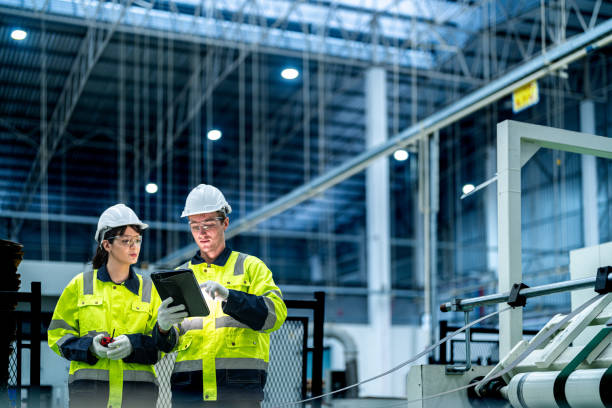Vertical Integration in Modular Construction: Redefining Industry Efficiency
Modular construction's vertical integration is revolutionizing industrial efficiency. This strategic approach combines design, manufacturing, and assembly under one roof, streamlining processes and reducing costs. As the construction industry faces challenges like labor shortages and project delays, vertical integration in modular building offers a compelling solution. By controlling the entire production chain, companies can optimize operations, enhance quality control, and deliver projects faster than ever before.

In the past decade, the industry has witnessed a significant shift towards vertical integration. This strategy involves companies expanding their operations to encompass multiple stages of the construction process, from design and engineering to manufacturing and on-site assembly. By bringing these functions in-house, modular construction firms can exert greater control over the entire building process, leading to improved coordination and reduced inefficiencies.
Benefits of Vertical Integration in Modular Construction
Vertical integration offers numerous advantages in the modular construction sector. First and foremost, it allows for unprecedented levels of quality control. With all aspects of production under one roof, companies can maintain consistent standards throughout the manufacturing process, resulting in higher-quality end products.
Cost reduction is another significant benefit. By eliminating intermediaries and streamlining operations, vertically integrated firms can achieve economies of scale and reduce overhead costs. This efficiency translates into more competitive pricing for clients and improved profit margins for the company.
Moreover, vertical integration enables faster project completion times. The ability to coordinate design, manufacturing, and assembly seamlessly reduces delays and allows for parallel processing of different project components. This speed-to-market advantage is particularly valuable in sectors where time is of the essence, such as affordable housing and disaster relief construction.
Challenges and Considerations
While the benefits of vertical integration in modular construction are substantial, companies must navigate several challenges to implement this strategy successfully. One of the primary obstacles is the significant upfront investment required to establish a vertically integrated operation. Companies need to acquire or develop expertise in multiple areas of the construction process, which can be costly and time-consuming.
Another consideration is the potential loss of flexibility. Vertically integrated firms may find it more challenging to adapt to market changes or incorporate new technologies quickly. There’s also the risk of becoming overly reliant on in-house capabilities, potentially missing out on innovations developed by specialized external partners.
Regulatory compliance across different aspects of the construction process can also pose challenges. Vertically integrated companies must ensure they meet all relevant standards and regulations for each stage of their operations, from design and manufacturing to on-site assembly.
Impact on the Construction Industry Landscape
The rise of vertically integrated modular construction companies is reshaping the competitive landscape of the construction industry. Traditional construction firms are facing pressure to adapt or risk losing market share to these more efficient, integrated operations.
This shift is driving innovation across the sector. Conventional builders are exploring ways to incorporate modular elements into their projects or partner with modular manufacturers to stay competitive. The increased efficiency and reduced waste associated with modular construction are also aligning well with growing demands for sustainable building practices.
Furthermore, the success of vertically integrated modular construction is attracting attention from investors and large corporations outside the traditional construction sector. This influx of capital and expertise is accelerating the development of new technologies and processes, further driving the industry’s evolution.
Future Trends and Opportunities
As vertical integration in modular construction continues to gain traction, several trends are emerging that will shape the future of the industry. One significant development is the integration of advanced technologies such as Building Information Modeling (BIM) and artificial intelligence into the design and manufacturing processes. These tools enable even greater precision and efficiency in modular construction.
Another trend is the expansion of modular construction into new markets and building types. While residential and commercial projects have been the primary focus, there’s growing interest in using modular techniques for infrastructure projects, healthcare facilities, and even high-rise buildings.
The concept of “smart factories” for modular construction is also gaining momentum. These highly automated facilities use robotics and IoT technologies to optimize production processes, further enhancing the efficiency gains of vertical integration.
Key Strategies for Successful Vertical Integration in Modular Construction
• Invest in comprehensive training programs to develop a multi-skilled workforce capable of handling various aspects of the construction process
• Implement advanced project management systems to coordinate activities across different departments effectively
• Develop strong relationships with suppliers to ensure a stable supply chain for raw materials and components
• Prioritize continuous improvement initiatives to identify and eliminate inefficiencies in the integrated process
• Invest in flexible manufacturing technologies that can adapt to changing project requirements and market demands
In conclusion, vertical integration in modular construction represents a paradigm shift in the building industry. By bringing together design, manufacturing, and assembly under one roof, companies can achieve unprecedented levels of efficiency, quality, and speed. While challenges exist, the potential benefits make this approach increasingly attractive to forward-thinking construction firms. As the industry continues to evolve, vertically integrated modular construction is poised to play a pivotal role in shaping the future of building and development.




